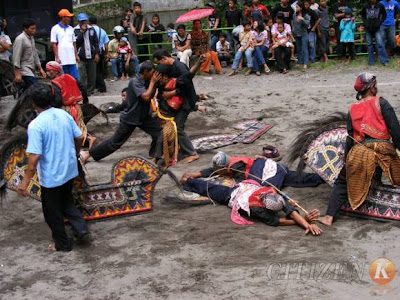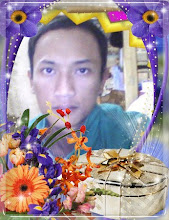Giriloyo Batik Center
 |
| Batik from Giriloyo |
To get well acquaintanced with batik, it is better for you to visit Giriloyo hamlet in the southern of Yogyakarta to learn everything about batik, especially batik tulis or batik handmade. Giriloyo, which is located in Bantul regency, is a production center of batik tulis. This place has at least 800 batik artisans, who are divided into some groups and assembled in an organization called "Paguyuban Batik Tulis Giriloyo". The establishment of the organization was intialized by the idea of Jogja Heritage Society [JHS] under the cooperation with Australian-Indonesia partnership soon after the 27 th May 2006 earthquake.
The activity of batik making in Giriloyo has been last since the establishment of the Royal Mausoleum of Mataram Kings. in Pajimatan hamlet in 1654. The Keraton official then asked several Abdi Dalem to keep the complex. The frequent interaction between the residents of Pajimatan and the abdi dalem open the villagers' view about batik Kraton, so they learned how to make such fine motives of batik.
As the time passed by, order of batik from Pajimatan rised significantly. On the other hand, the number of the maker was insufficient. Therefore, the Pajimatan batik artisans cooperated with the batik artisans Giriloyo. The system that they used in the cooperated at the time was like this: the half-done batik fabrics from Pajimatan were taken by the artisans from Giriloyo for the finishing process. After the finishing process was done, they brought the batik back to Pajimatan. From the cooperation, the Giriloyo artisans learned to make batik with such motives from Pajimatan and established their own batik industry. Thus, the name of Giriloyo batik is better known than Pajimatan batik "www.batiktulisgiriloyo.blogspot.com".
In addition to its fame as batik center, the Giriloyo batik artisans have successfully record their ability by making the longest batik in Indonesia [1,2 km]. It is recorded in the Indonesian Record Museum [MURI} which also marking their resurgence after the 2006 earthquake.
 |
| Varied motives of batik tulis Giriloyo |
 |
| Batik artisans making batik |
However, the Giriloyo batik artisans agree to use natural coloring batter than the synthetic one to maintain the quality. Beside, the natural coloring gives more beautiful result. In addition to the traditional motive, the Giriloyo batik artisans also make minimalist motives which looks classic, graceful, and elegant. Some product of Giriloyo which use batik are traditional jarit, saroong, shirts, pillowcase, tablecloth, handkerchief, batik painting, and many more.
If you are interested to learn how to make batik, you should visit Giriloyo because as a batik center, Giriloyo also facilities its visitors with a special package of batik making. The package is prepared for minimum 10 people and maximum 50 people. In the package, you will be guided by batik artisans to make your own batik work which you can bring home. While you are waiting for your own batik work to be processed, you can take a walk to The Royal Mausoleum of Mataram Kings on the top of Imorgiri hill or tasting the local traditional menus such as pecel kembang turi, tiwul ayu, gurah tea, or wedang uwuh.
Location:
Giriloyo Batik Center is located on 1 km from the burial plot complex of mataram kings in Imogiri. Its exact location is in Giriloyo Hamlet, Wukirsari Village, Imogiri Sub-regency, Bantul Regency, Yogyakarta, Indonesia.

























































